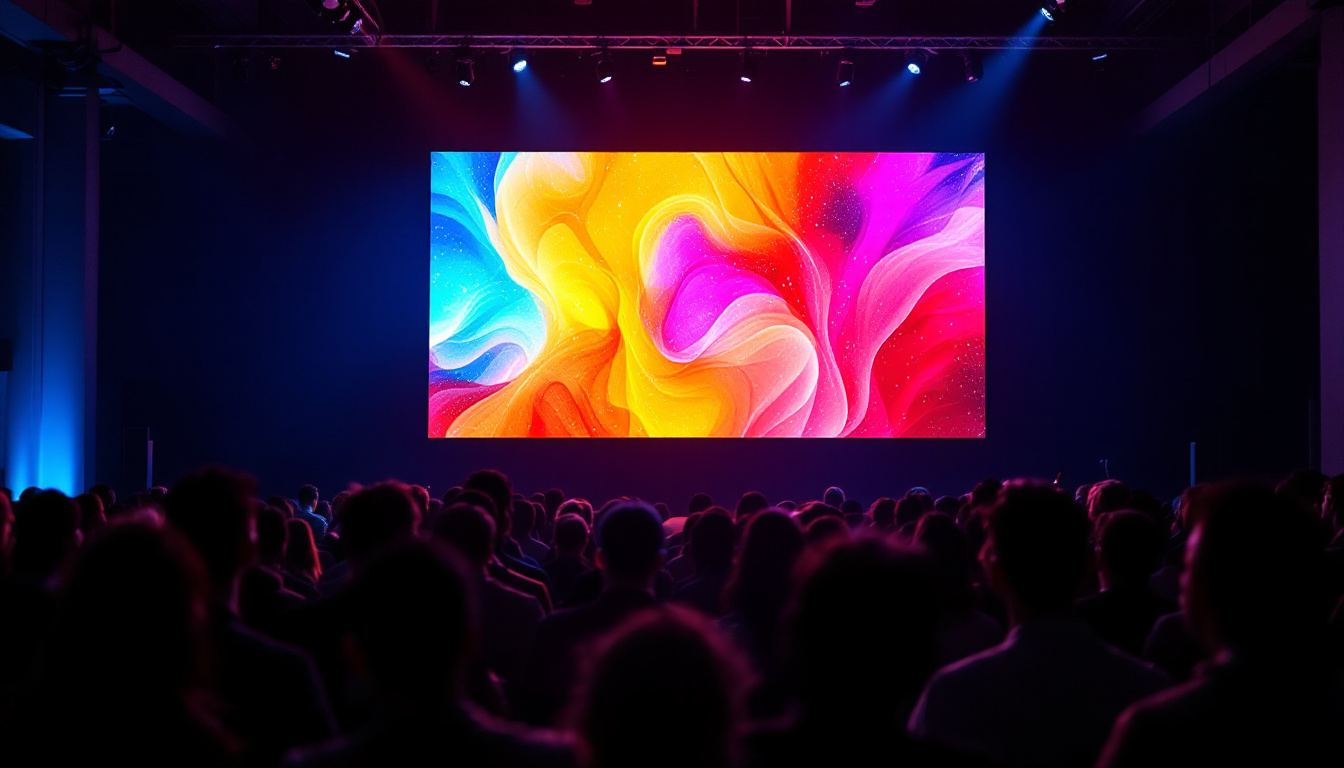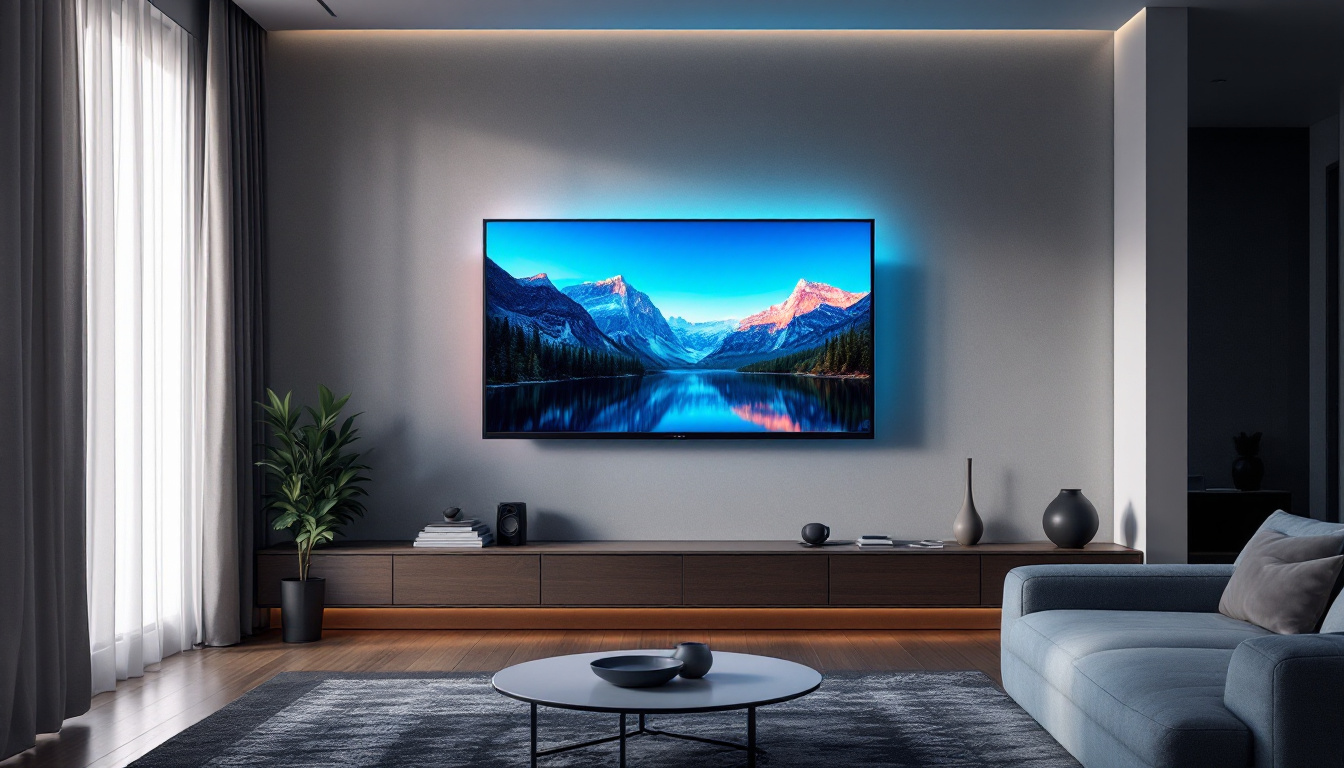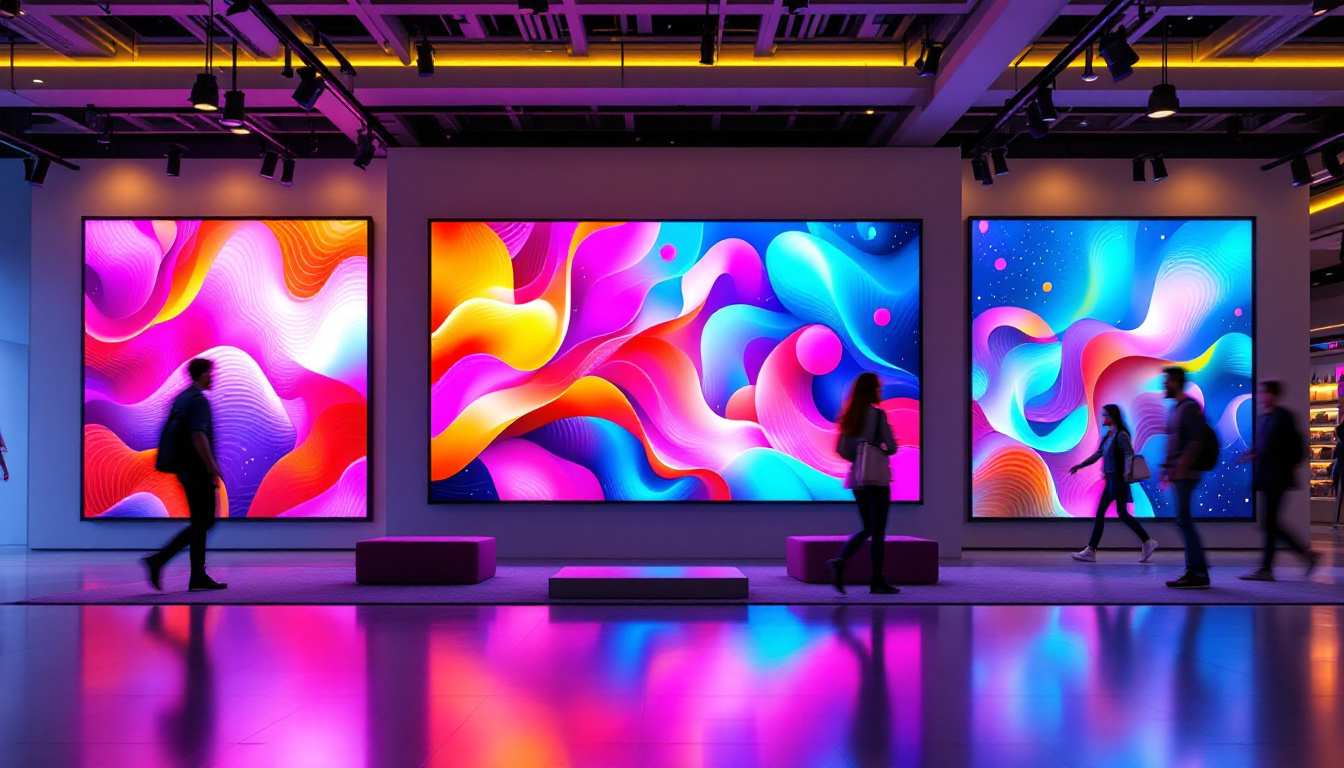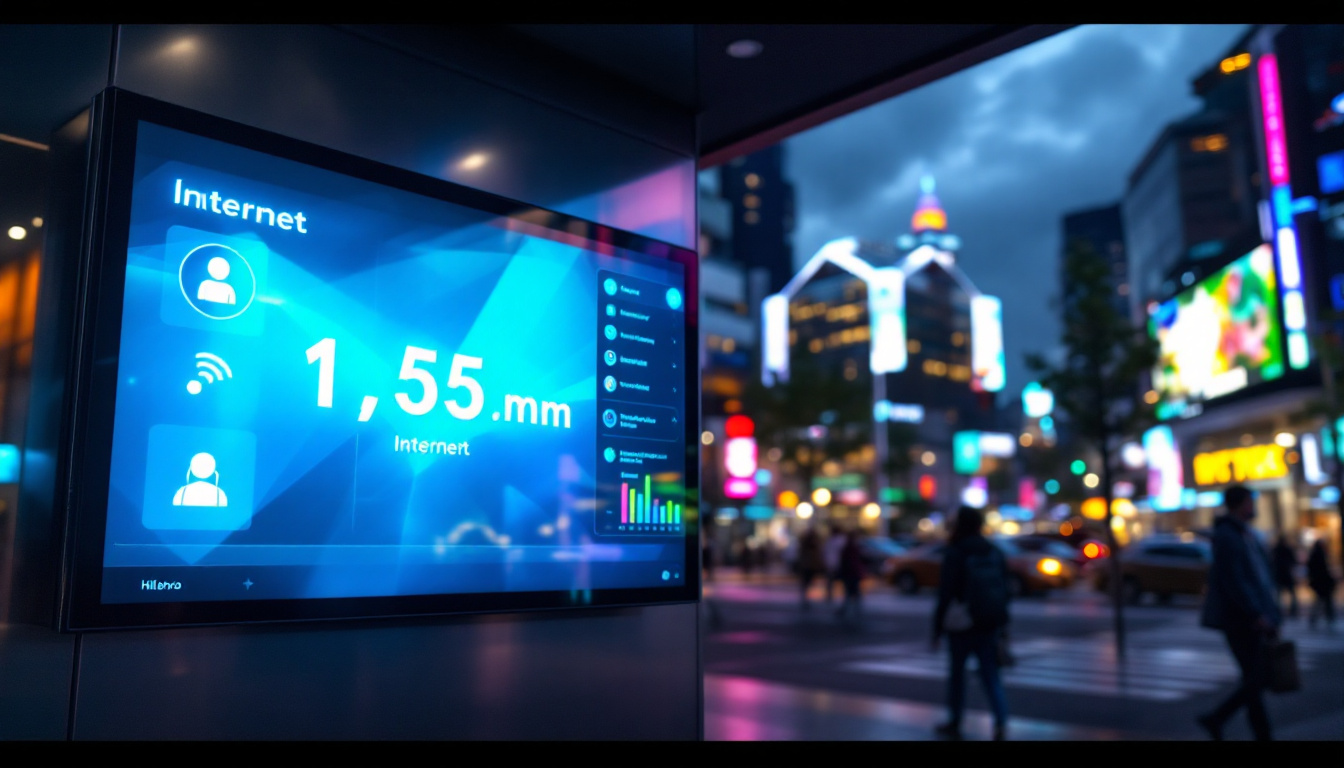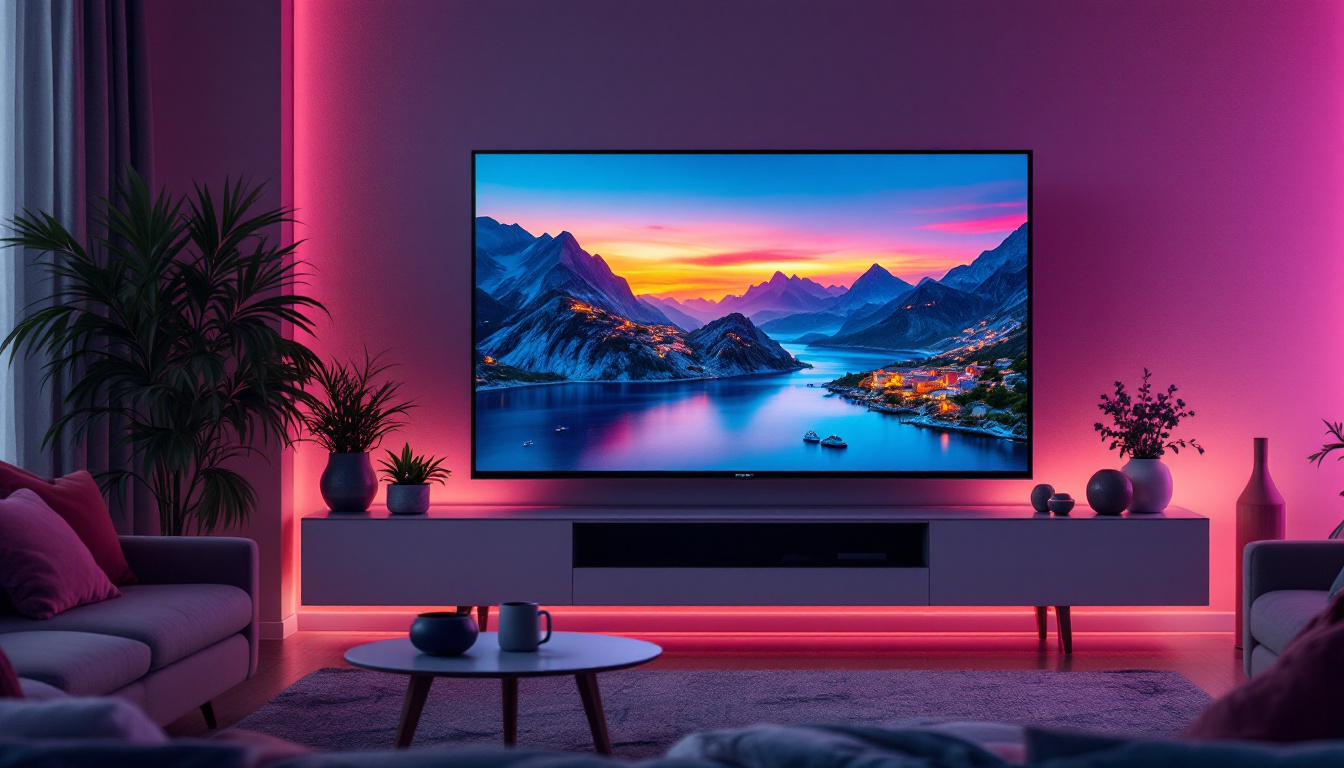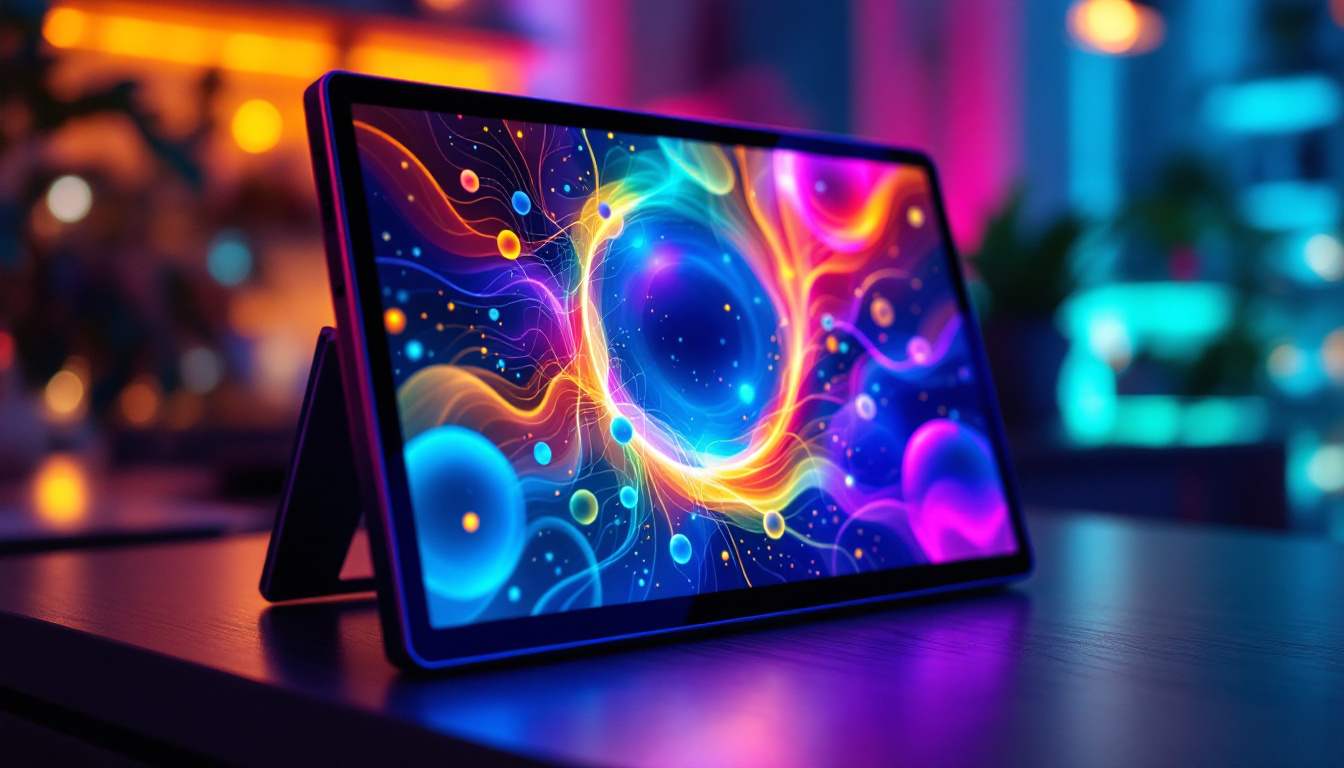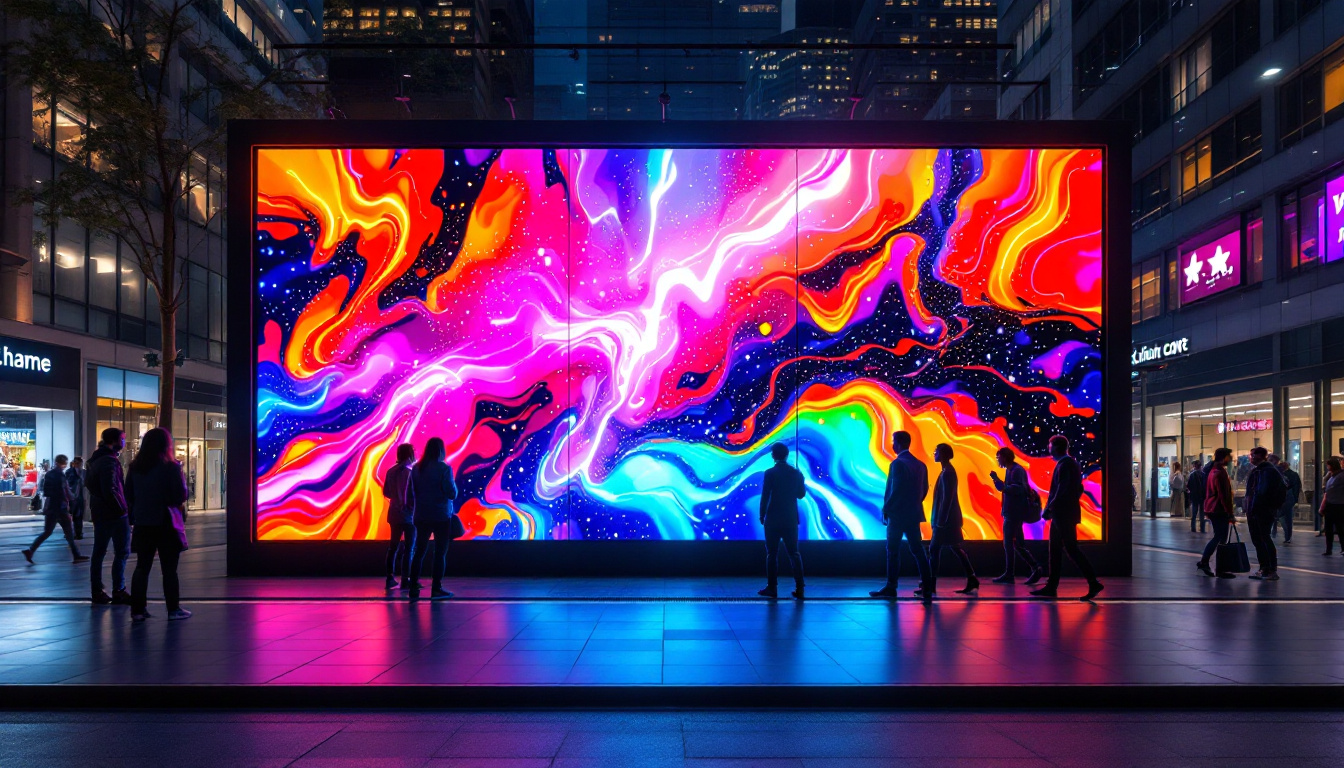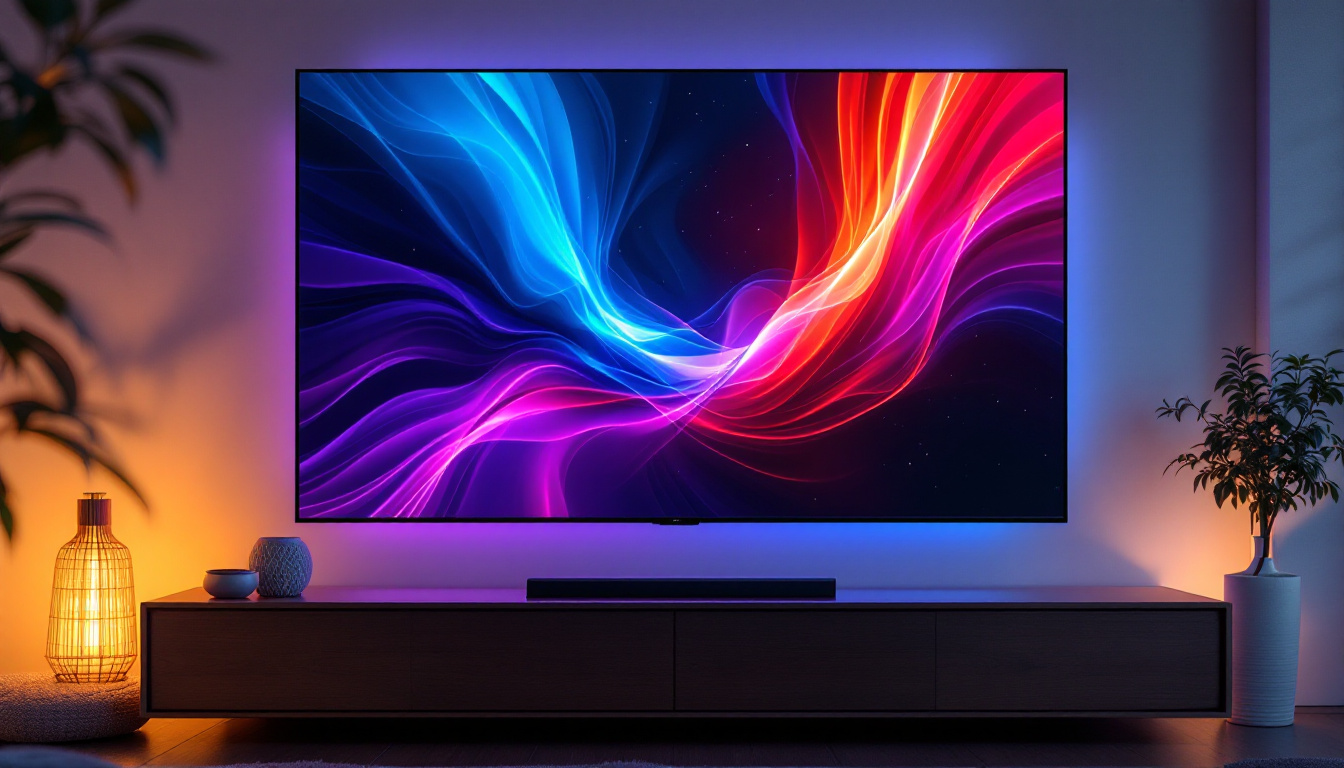First Flat Panel TV: LED Display Explained
The evolution of television technology has been a remarkable journey, transforming the way people consume visual media. Among the many advancements, the introduction of flat panel TVs marked a significant turning point. This article delves into the history and technology behind the first flat panel TVs, focusing particularly on LED display technology, which has become a standard in modern television sets.
The Dawn of Flat Panel TVs
Flat panel TVs emerged in the late 1990s and early 2000s, offering a sleek alternative to the bulky cathode-ray tube (CRT) televisions that had dominated the market for decades. The initial excitement surrounding flat panel technology was driven by its promise of thinner designs, lighter weights, and improved picture quality.
Early Innovations
The journey toward flat panel technology began with several key innovations, including liquid crystal display (LCD) and plasma display technology. These technologies paved the way for the development of LED displays, which would ultimately dominate the market.
LCDs utilize liquid crystals sandwiched between two layers of glass, allowing for the manipulation of light to create images. Plasma displays, on the other hand, use small cells filled with gas that emit light when electrically charged. While both technologies offered significant improvements over CRTs, they had their limitations, particularly in terms of brightness and energy efficiency. Furthermore, early plasma displays were known for their rich colors and deep blacks, but they also faced issues with screen burn-in, which limited their appeal for certain types of content, such as video games or news channels that featured static logos.
The Birth of LED Technology
LED (Light Emitting Diode) technology emerged as a game-changer in the flat panel TV landscape. Initially, LED was used as a backlighting method for LCD screens, enhancing brightness and color accuracy. Over time, manufacturers began to develop fully LED-based displays, leading to the creation of what is now commonly referred to as LED TVs.
LED displays offer several advantages over their predecessors, including better energy efficiency, thinner designs, and superior picture quality. The ability to produce deeper blacks and more vibrant colors has made LED displays a popular choice among consumers. Additionally, advancements in LED technology have introduced features like local dimming, which allows for more precise control over brightness in different areas of the screen, further enhancing the viewing experience. As consumers began to demand larger screens for home theaters and gaming, the flat panel TV market responded with ever-larger models, making it possible to enjoy cinematic experiences from the comfort of home. This shift not only transformed entertainment consumption but also influenced the design of living spaces, with many homes now featuring dedicated media rooms or wall-mounted displays that serve as focal points in modern interior design.
Understanding LED Displays
To fully appreciate the impact of LED technology on flat panel TVs, it is essential to understand how LED displays work. At its core, an LED display is made up of thousands of tiny light-emitting diodes that work together to create images on the screen. These diodes are semiconductor devices that emit light when an electric current passes through them, allowing for a wide range of colors and brightness levels. This technology has revolutionized the way we experience visual media, providing sharper images and more vibrant colors than ever before.
How LED Displays Function
LED displays can be divided into two primary categories: edge-lit and full-array. Edge-lit LED displays have LEDs positioned along the edges of the screen, while full-array displays feature a grid of LEDs behind the entire screen. Full-array technology allows for local dimming, which enhances contrast and improves overall picture quality. This means that certain areas of the screen can be dimmed or brightened independently, resulting in deeper blacks and brighter highlights, which is particularly advantageous for watching films with dark scenes.
When a signal is sent to the display, the LEDs light up in varying intensities to create the desired colors and brightness levels. This process happens rapidly, allowing for smooth motion and vibrant visuals. Additionally, advancements in color accuracy and processing technology have further enhanced the viewing experience. Technologies such as Quantum Dot and HDR (High Dynamic Range) have emerged, allowing LED displays to produce a wider color gamut and improved luminance, making the images on the screen appear more lifelike and engaging. These innovations have set new standards for visual fidelity, making LED displays a popular choice among both casual viewers and professional content creators.
Benefits of LED Technology
LED displays offer several advantages that have contributed to their widespread adoption. One of the most significant benefits is energy efficiency. LED TVs consume less power compared to traditional LCDs and plasma displays, making them a more environmentally friendly option. This energy efficiency not only reduces electricity bills but also contributes to a lower carbon footprint, appealing to eco-conscious consumers who wish to minimize their environmental impact.
Another advantage is the improved picture quality. LED technology allows for higher brightness levels, which is particularly beneficial in well-lit rooms. The enhanced contrast ratios and color accuracy also contribute to a more immersive viewing experience, making LED TVs suitable for various content, from movies to video games. Furthermore, the slim profile of LED displays allows for sleek designs that can fit seamlessly into modern living spaces, making them not just functional but also aesthetically pleasing. With the ability to produce stunning visuals in a compact form, LED displays have become a staple in homes and commercial settings alike, transforming the way we consume media and interact with technology.
The Impact of LED Technology on the Market
The introduction of LED technology has had a profound impact on the television market. As consumers became more aware of the benefits of LED displays, demand surged, leading manufacturers to invest heavily in research and development.
Market Growth and Competition
The rapid growth of the LED TV market has fostered intense competition among manufacturers. Companies have continually sought to innovate, introducing features such as 4K resolution, high dynamic range (HDR), and smart TV capabilities.
This competition has not only driven down prices but has also led to a wider variety of options for consumers. Today, shoppers can choose from a range of sizes, styles, and features, ensuring that there is an LED TV to meet every need and budget.
Moreover, the influx of new players into the market has encouraged established brands to rethink their strategies. Many are now focusing on sustainability, incorporating eco-friendly materials and energy-efficient technologies into their designs. This not only appeals to environmentally conscious consumers but also aligns with global efforts to reduce carbon footprints and promote greener living.
Consumer Preferences and Trends
As technology has advanced, consumer preferences have shifted. Many buyers now prioritize features such as picture quality, smart capabilities, and connectivity options. The rise of streaming services has also influenced purchasing decisions, with consumers seeking TVs that can seamlessly integrate with their favorite platforms.
Additionally, the trend toward larger screens has become evident, with many households opting for TVs that provide a cinematic experience. This shift has further fueled the demand for high-quality LED displays that can deliver stunning visuals on larger screens.
Furthermore, the integration of artificial intelligence into smart TVs has transformed the viewing experience. Many modern LED TVs now come equipped with voice recognition and personalized content recommendations, making it easier for users to navigate their options. This technological advancement not only enhances user engagement but also reflects the growing expectation for devices to be intuitive and user-friendly, catering to the diverse preferences of a tech-savvy audience.
Future of LED Display Technology
The future of LED display technology looks promising, with ongoing research and development aimed at improving performance and expanding capabilities. Innovations such as MicroLED and OLED technology are emerging as potential game-changers in the industry.
MicroLED Technology
MicroLED technology utilizes tiny individual LEDs to create images, offering several advantages over traditional LED displays. One of the most significant benefits is the ability to achieve perfect black levels, resulting in stunning contrast and color accuracy.
MicroLED displays are also modular, allowing for flexible screen sizes and shapes. This adaptability opens up new possibilities for both residential and commercial applications, making it an exciting area to watch in the coming years.
OLED vs. LED: A Comparison
While LED technology has dominated the market, OLED (Organic Light Emitting Diode) technology has emerged as a strong competitor. OLED displays offer superior color accuracy and contrast, as each pixel emits its own light, allowing for true blacks and vibrant colors.
However, OLED technology comes with its own set of challenges, including potential burn-in issues and higher manufacturing costs. As a result, consumers may find themselves weighing the pros and cons of each technology when making a purchasing decision.
Conclusion: The Legacy of Flat Panel TVs
The introduction of flat panel TVs, particularly those utilizing LED technology, has revolutionized the way people experience visual media. From their early beginnings to the advanced models available today, flat panel TVs have continuously evolved to meet consumer demands for better picture quality, energy efficiency, and innovative features.
As technology continues to advance, the future of flat panel TVs looks bright. With ongoing developments in LED, MicroLED, and OLED technologies, consumers can expect even more impressive viewing experiences in the years to come. The legacy of flat panel TVs is not just about their sleek designs; it is also about the way they have transformed entertainment, making it more accessible and enjoyable for everyone.
Explore the Future of Visual Media with LumenMatrix
As we embrace the advancements in flat panel TV technology, LumenMatrix stands at the forefront, offering a wide array of LED display solutions that cater to your every need. Whether you’re looking to enhance your brand visibility with an Indoor LED Wall Display, captivate passersby with an Outdoor LED Wall Display, or create dynamic visual experiences with our Custom LED Displays, LumenMatrix has the cutting-edge technology to bring your vision to life. Experience the pinnacle of innovation and design in LED display modules. Check out LumenMatrix LED Display Solutions today and be a part of the visual revolution.



